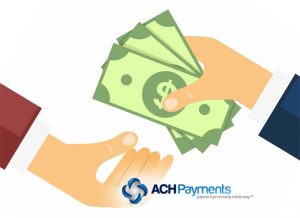Chargebacks are meant to help both consumers and merchants. If the merchant doesn’t deliver, the consumer gets their money back. If the consumer gets charged many times over for something they only bought once, they get their money back.
This is how it’s all supposed to work. It’s meant to create confidence in the system. While many chargebacks are legitimate, there are a lot of people who take advantage of the system. Another name for it is “friendly fraud.”
On the merchant’s end, chargebacks can get expensive and spiral out of control. For instance, there’s a fee in disputing chargebacks. There’s also a cost to the network if the merchant loses a dispute.

Chargebacks Are Impossible to Eliminate
They’re impossible to get rid of completely. If you’re a merchant, it’s something that you’ll have to grow accustomed to. Especially if you’re taking payment for goods and services online. If merchants are in business, they’re going to accept payments online.
A customer has the option of disputing a charge with their bank, or card issuer, and get reimbursed.
So, the weight of things is now on the merchant’s shoulders to put up a fight to get their money back. They must prove that it was a valid transaction between them and the consumer. It’s a way of life, and will always happen. However, there are things a merchant can do to reduce the chance of customers charging back an item or services purchased.
As a merchant, make sure that you’re using a name that customers can immediately recognize.
Even a well-meaning customer may ask for a chargeback if they can’t recognize the merchant’s footprint. Quite often, credit card descriptor names are the ones that show up on a customer’s online statements or credit card bills.
Customers go through a ton of mail on any given day, and they may not recognize the merchant’s name. It’s not a bad idea to use the name appearing on your website as the same name of your credit card descriptor. Otherwise, customers won’t hesitate to challenge the bill. And even if they don’t challenge the bill, there’s a certain amount of irritation on their behalf in figuring it all out.

Make your company available for anyone wanting to conduct a little research into the business that just sent them a bill.
Consider your email address, phone number, and other website information that allows customers to reach you. Not all customers are going to issue a chargeback.
However, it’s just good business practices to be transparent. Even if customers are unhappy and want to voice concerns, transparency will still be good for your reputation.Detail is always good. Just think of those times you ordered something online and were disappointed because you didn’t think it was what you ordered.
It’s the same feeling when signing up for a service that was supposed to solve a problem—but didn’t. Make sure that you provide a detailed description of what customers are buying. Be honest, and skip the superlatives. Tell the truth about your product or service. Provide a detailed list of your product’s functionalities and features.
Deliver what you promise.
Customers hate signing up for a free trial, and then asked to provide credit card information for future billing. If you do collect credit card information, make sure you give them an opportunity to opt-out at the end of any free trials. The reason being, there may be customers who forgot to cancel out and will issue a chargeback. Those customers who stay want the product or service.

Never make promises that you can’t keep.
We all learned this at a young age in life. An example would be offering a lifetime membership for a product or service and then cancelling the service. Or going in a different direction. This is quite the same as promising results that will be impossible to deliver on.
Pay customers what you owe them.
Never hold on to anyone’s money by not giving customers what they’ve paid for. Keep this in mind if offering an annual prescription. Customers can use the product or service for eight months and will get the full amount of money back if they cancel. This full amount won’t be a prorated amount either.
Billing models that are credit-based allow customers to deposit money up front.
The goal is for them to work off money over a specific time period. You’ll find chargebacks increase using this method. They decrease when providing a service and then billing customers after the full service has been provided
If someone isn’t happy with your product or service, they’re going to try to get their money back one way or another. So, offer a full refund. Chargebacks were created for customer protection in the first place.

Keep a close eye on orders that originate from foreign countries, especially if it’s not a purchase that looks like a normal order.
There’s a lot of fraudulent Internet purchases that originate from Russia, Eastern developing countries, and Indonesia.
It’s a wise idea to get a CVC or CVVE code on payment forms.
This induces a customer to order with their credit card in hand. You may even want to email or call the customer to confirm the order. That’s picking up the phone—something that not a lot of merchants do in this modern day and age. Some merchants post warning messages on order pages to help prevent people from attempting to place a fraudulent order.
Merchants are all too familiar with the practice of chargebacks.
The word makes some merchants cringe. Yet, it’s a part of doing business as you well know. There’s a price to pay in terms of the energy spent in having to dispute fees, let alone the fact that you lose customers in the process. These customers represent income, and it’s difficult enough to find customers in the first place.
This is why it’s so important to arm yourself with knowledge that can help lower the chances of having to deal with them in the first place. Prevention is the key to increased profits. If you’re an online merchant, you’re going to see a higher rate of chargebacks as opposed to a brick and mortar store.
Chargebacks are a way of life for business owners.
As mentioned earlier, chargebacks are going to happen. The goal is to run a business in ways that can reduce them. Summarizing, chargebacks are a result of the following:
- Customer Dissatisfaction. Customers that are not present to examine a product before they buy it will often feel misled when you don’t meet their expectations. Then there are those untimely shipping delays that can create disgruntled customers. Sometimes, customers just change their mind about the product.
- Problems with Billing. It’s all too easy to double charge a customer, especially over the Internet. It’s easy for customers to hit the checkout button more than once. This happens a lot when websites are using a slow payment gateway. Keep customers in mind and make it a seamless and easy process.
- Customers Forgetting Their Transaction. Buying in person can create a memorable experience. Buying something online is easy to forget. When customers get a legitimate product in the mail, they’ll often forget when and where they made the sale. And in today’s uncertain world, they’ll often call their bank on the spot and cancel their credit card purchase. As a merchant, you’ll lose business if you dispute a sale even though you’re in the right.

- Fraud Is Alive and Well. Unfortunately, fraud hurts everyone. It’s especially prevalent around the holiday season. People will notice a fraudulent charge on their credit card, and will immediately call their bank to stop all fraudulent actions. The unfortunate thing is that not all transactions charged to their card were fraud. That means that many legitimate merchants will have to pay for the chargeback on top of the lost income from an item they sold.
- Dishonest Customers. It’s sad to think there are customers who will not honor their obligation to pay for their product or service. Customers are still somewhat removed from an online transaction. Even in today’s world, it’s still different than purchasing a product in person. It may be because a traditional signature isn’t required. Or, it may be because they’re dishonest.
In conclusion
If you’re an online business owner, there will be a plethora of stories to tell before it’s all over. Factor into your marketing efforts the fact there will be chargebacks. Stay on top of the latest techniques to stop chargebacks from happening as much as possible. Read, study, and keep an eye on the competition. You may even want to test your system and buy your own product on occasion. It can be one of the best ways to step inside the mind of your customers.



